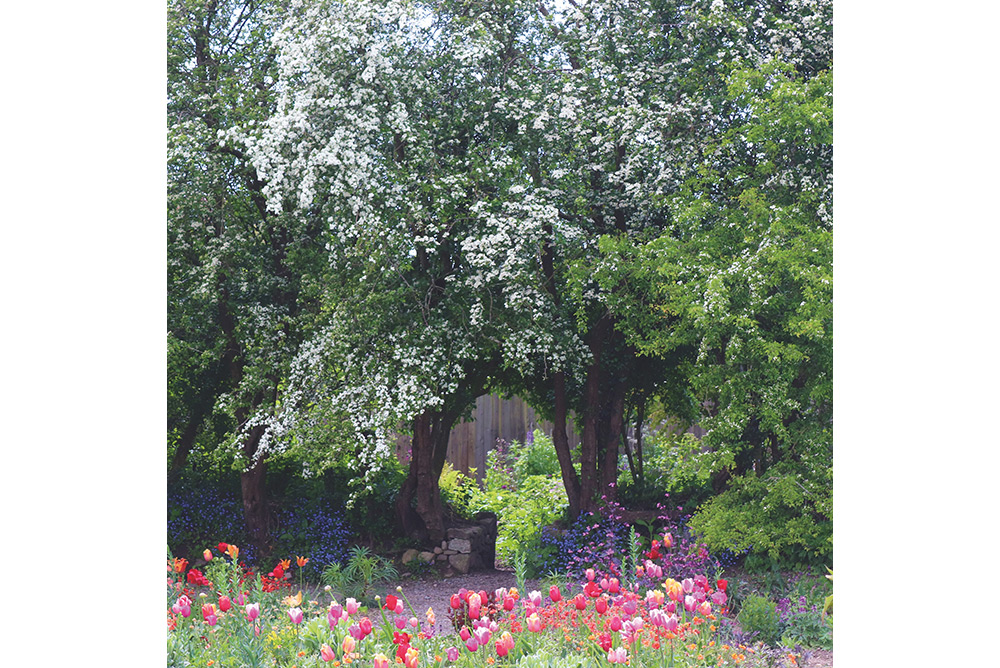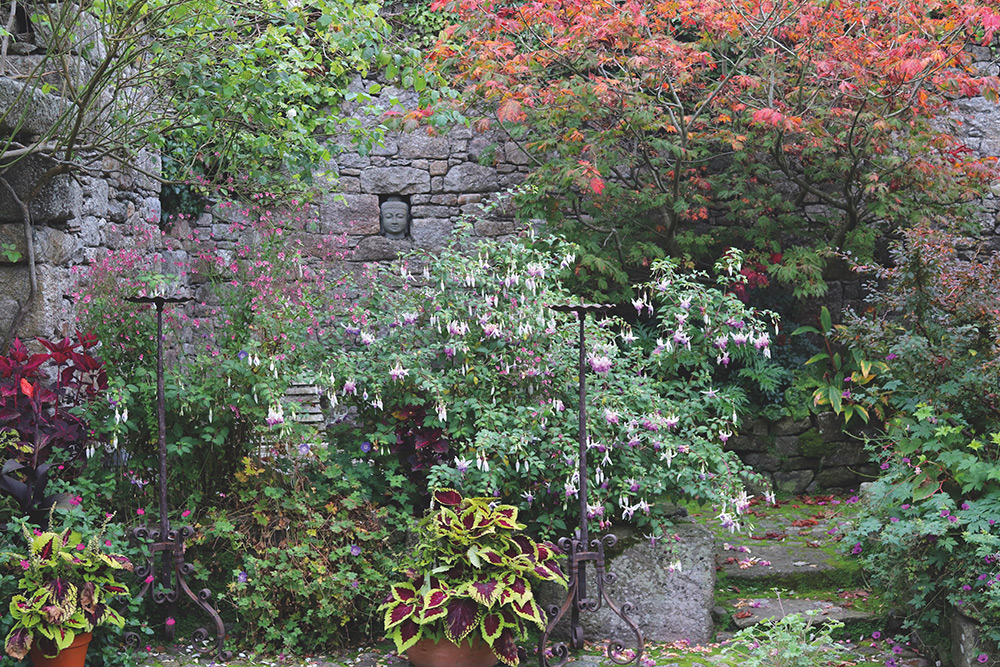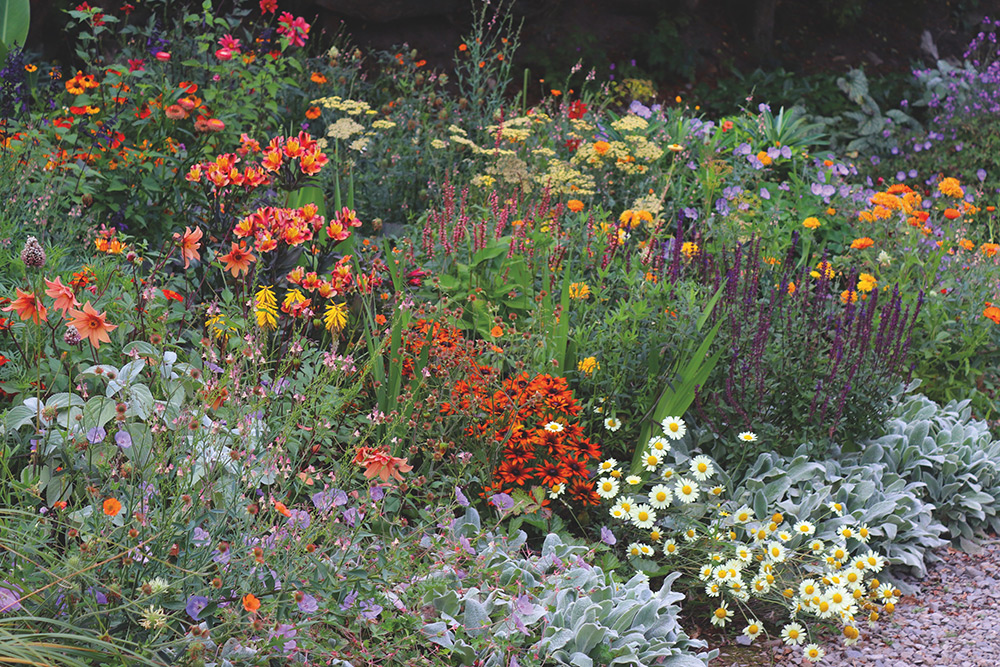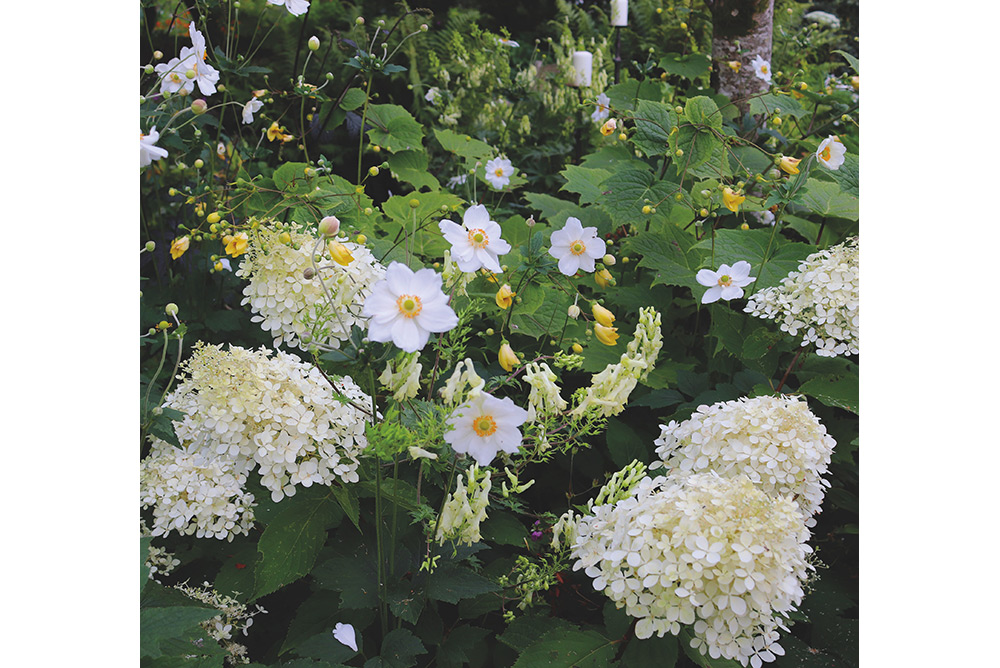Green Acre #475: An Irish Fantasy
By Stephanie Cavanaugh
THIS IS HOW I imagine Ireland: a land of constant mist, and green, so very green.
That is how my garden looks this morning, and has looked for days and will look for days yet to come, they say. Cool and misty, when it’s not raining, with an occasional rare patch of sun.
It puts one in the perfect mood for wandering the pages of Grounded in the Garden, the first book by Irish artist TJ Maher, who transfers his skill at painting to the garden he grows in Wicklow, about an hour and a half southwest of Dublin.
He popped up on my Facebook feed about a year ago, with photos of his garden so stunning I fell into them, enchanted. The pictures were brimming with color and texture, from the stones that edge the paths and form steps, to massings of flowers and plants so dense they seem to form their own supports (staking is nearly invisible).
Maher and his partner have been growing their wonderland for more than 25 years. Originally a third of an acre, including the house, it recently expanded to just over an acre with the purchase of an adjacent lot. Patthana, as the garden is called, is open to the public two days a week.
Patthana is a Buddhist word, says Maher, who follows the philosophy; it means to place attention in the now, bringing awareness to this moment. The plants and animals that inhabit the space free him from the worries of my mind as they drew me into their world . . . ”
That the book is a feast for the eyes is an understatement. The color comes in stunning waves, the same plant might be repeated, which he finds restful, but interspersed are flowers that echo the color while offering the eye an entrancing variety of textures, heights, and shadings. Harmony with nature is a repeated theme—a place where bugs and birds and butterflies are invited to share the space with the humans who view and tend the landscape.
There are numerous levels and walkways, such as the moss-covered stone steps that curve upward through climbers and ferns and flowers to the inner garden, a more formal area, with a lawn, mounds of shaped boxwood, small trees, and borders with seasonal displays. There’s a pond, alive with frogs, and a meadow in the making in that new acre.
While there is an extraordinary variety of plantings, chosen for interest throughout the year, even in winter when little but the bones can be seen, the gardens are intricately orchestrated, with colors carefully chosen to create a mood, set a stage. There are spots to daydream, to dine, a place for morning, another for evening . . .
Some areas are mostly pots, which allows a continuous show of flowers. Tulips might give way to geraniums, coleus, fuchsia, or tropicals such as citrus and jasmine. If these plants wither or fade, they’re easily replaced and easy to move.
Maher sometimes borders on the heretical (for some—not me), yanking a plant he doesn’t like, or lopping off flower heads when a color is disagreeable, tossing potted tulips after bloom—the show’s over!—and on to the next thing.
It’s wonderfully freeing to have permission to say: That thing may be healthy but it’s hideous, off with its heads!
That the inspiration is painterly is not surprising. Maher is an artist, working in oils, and a color wheel is his key tool, a circle of colors that show the relationship of one to the next, variations on the primary shades of red, blue, and yellow. Choose a color on the wheel and you can see the colors on either side are in harmony. With a palette selected, you can direct the eye to what you wish to enhance, or minimize.
Take it from a master.
Some masterly tips:
- A small garden can be made to feel larger by keeping strong color near the house, gradually fading out toward the rear.
- Use hot colors where they can pull the focus away from eyesores like compost bins, trash cans, and air-conditioner apparatus, which you should try to screen or hide.
- Strong colors can be uncomfortable in shady gardens, which lend themselves to soft hues and pastels.
- Soft colors in sunny spots can appear washed out.
- If you lack a focal point, borrow one from a neighbor, and frame it with plantings. In Maher’s case, a church steeple provides a lofty backdrop.
- Or, create a focal point if you lack one. An old gate, a door, a bench, a mirror, these elements can create divisions in space, gardens within gardens—and more color if wanted or needed.
- Don’t use a hodgepodge of pots; keep shapes the same, and colors unified. Maher prefers terracotta and keeps an eye out for old pots, “which age to a beautiful patina over time.”
- The materials you choose should coordinate with your home’s exterior, and keep it simple. Less is more.
- Don’t be “fiddly” in a small garden. Small plants will make it look smaller, while large ones can break up the space and keep the eye from moving too quickly.
- Break up the garden into “rooms.” You should never see it all at a glance.
- Most important: What do you want the garden to feel like? Is it a place to relax or a place to feel stimulated, recharged? Answer that, and you have your guide.
Grounded in the Garden is published by UK-based Pimpernel Press and is available at fine US booksellers for about $45.
.









Beautiful pictures and lovely sounding advice.